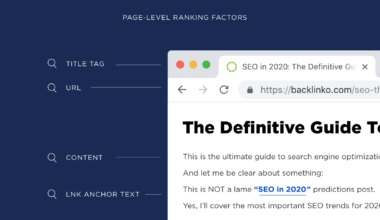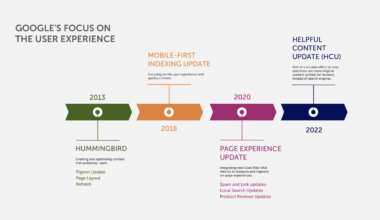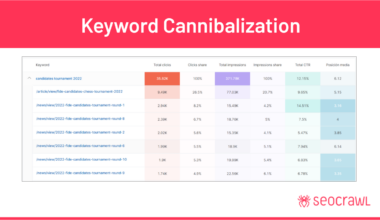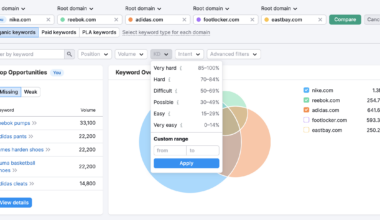Introduction: What is SEO and Google Analytics?
As a website owner or digital marketer, you may have heard the term SEO (Search Engine Optimization) and Google Analytics. But what exactly are they?
SEO is the practice of improving the quality and quantity of website traffic by increasing the visibility of a website or a web page in a search engine’s organic results. In simpler terms, it is the art of getting your website to appear on the first page of Google search results when someone types in a relevant query.
Google Analytics, on the other hand, is a web analytics service offered by Google that tracks and reports website traffic. It helps website owners and marketers understand how people are using their website, which pages are popular, and how users are interacting with the site.
Together, SEO and Google Analytics can provide valuable insights into the performance of a website, identify areas for improvement, and help website owners make data-driven decisions.
In this article, we will explore how to measure SEO success using Google Analytics. We will cover how to set up Google Analytics for SEO measurement, understand key SEO metrics, analyze organic search traffic and keywords, and track conversions and goal completions. By the end of this article, you will have a better understanding of how to use Google Analytics to continuously improve your SEO strategy.
Setting Up Google Analytics for SEO Measurement
Before you can measure the success of your SEO strategy with Google Analytics, you need to set up your account and configure it for SEO tracking. Here’s how to do it:
1. Create a Google Analytics account: If you don’t already have a Google Analytics account, you’ll need to create one. Simply go to the
Google Analytics website
and sign up for a free account.
2. Install the Google Analytics tracking code: Once you have your account, you’ll need to install the Google Analytics tracking code on your website. This code will allow Google Analytics to track visitor behavior and provide you with valuable data. You can find detailed instructions on how to install the tracking code
here
.
3. Set up goals: Goals are an important part of tracking the success of your SEO strategy. They allow you to measure specific actions that visitors take on your website, such as filling out a form or making a purchase. To set up goals, go to the Admin section of your Google Analytics account and click on Goals under the View column. Then, follow the instructions to create your goals.
4. Enable site search tracking: If your website has a search function, you can enable site search tracking in Google Analytics to track what visitors are searching for on your site. To do this, go to the Admin section of your account and click on View Settings under the View column. Then, scroll down to Site Search Settings and turn on Site search Tracking.
5. Link Google Search Console to Google Analytics: Google Search Console is a free tool that provides valuable information about your website’s performance in Google search results. By linking it to your Google Analytics account, you can see important data such as the keywords visitors use to find your site. To link the two accounts, go to the Admin section of your Google Analytics account and click on Property Settings under the Property column. Then, scroll down to Search Console and click on the Adjust Search Console button.
Once you’ve completed these steps, you’ll be ready to start measuring the success of your SEO strategy with Google Analytics. By setting up goals, tracking site search, and linking Google Search Console, you’ll have access to valuable data that can help you make data-driven decisions and continuously improve your SEO efforts.
Understanding Key SEO Metrics in Google Analytics
Now that you have set up Google Analytics for SEO measurement, it’s time to understand the key SEO metrics that can help you track the success of your SEO strategy. Here are some of the most important metrics to keep an eye on:
1. Organic Search Traffic: Organic search traffic refers to the number of visitors that come to your website through organic search results, i.e., the results that appear below paid ads on search engine results pages (SERPs). To view organic search traffic in Google Analytics, go to the Acquisition section and click on Overview. Here, you can see the number of sessions, bounce rate, and other important metrics related to organic traffic.
2. Keywords: Keywords are the search terms that people use to find your website on search engines. By tracking the keywords that bring visitors to your site, you can identify which keywords are driving the most traffic and optimize your content accordingly. To view the keywords that visitors use to find your website, go to the Acquisition section and click on Organic Search. Here, you can see the top keywords, their ranking position, and the number of sessions they generate.
3. Pageviews: Pageviews refer to the number of times a specific page on your website has been viewed by visitors. By tracking pageviews, you can identify the most popular pages on your site and analyze how visitors are interacting with your content. To view pageviews in Google Analytics, go to the Behavior section and click on Site Content. Here, you can see the number of pageviews, unique pageviews, and other important metrics related to your website pages.
4. Bounce Rate: Bounce rate refers to the percentage of visitors who leave your site without interacting with it further. A high bounce rate indicates that visitors are not finding what they are looking for on your site and may be leaving quickly. To view bounce rate in Google Analytics, go to the Audience section and click on Overview. Here, you can see the bounce rate for your entire site, as well as for individual pages.
5. Conversion Rate: Conversion rate refers to the percentage of visitors who take a desired action on your site, such as filling out a form or making a purchase. By tracking conversion rate, you can measure the effectiveness of your SEO strategy in driving valuable actions on your site. To view conversion rate in Google Analytics, go to the Conversions section and click on Goals. Here, you can see the conversion rate for each of your goals, as well as for your entire site.
By understanding these key SEO metrics in Google Analytics, you can track the success of your SEO strategy and make data-driven decisions to continuously improve it. Keep an eye on organic search
Analyzing Organic Search Traffic and Keywords
Organic search traffic and keywords are essential metrics to track when measuring the success of your SEO strategy. By analyzing these metrics in Google Analytics, you can determine which keywords are driving the most traffic to your website and which pages are performing best in search results. Here’s how to analyze organic search traffic and keywords in Google Analytics:
1. View organic search traffic: To view the organic search traffic to your website, go to the Acquisition section and click on All Traffic. Then, click on Channels and select Organic Search. Here, you can see the number of sessions, pageviews, bounce rate, and other important metrics related to organic search traffic.
2. Analyze top organic keywords: To see which keywords are driving the most traffic to your site, go to the Acquisition section and click on Organic Search. Then, click on Organic Keywords. Here, you can see the top organic keywords, their ranking position, and the number of sessions they generate. Use this data to identify which keywords are performing well and which ones may need optimization.
3. Track keyword rankings: Google Analytics doesn’t show keyword rankings, but you can use third-party tools like
SEMrush
or
Ahrefs
to track your keyword rankings. By tracking your rankings over time, you can identify which keywords are improving and which ones may need further optimization.
4. Analyze landing pages: Landing pages are the pages on your website that visitors land on when they click on a search result. To see which landing pages are performing best in search results, go to the Acquisition section and click on All Traffic. Then, click on Channels and select Organic Search. Here, you can see the landing pages that are generating the most traffic from organic search. Analyze these pages to see what content is resonating with your audience and how you can optimize other pages to perform better.
5. Monitor click-through rate (CTR): CTR is the percentage of clicks that your website receives compared to the number of impressions (or views) it receives in search results. By monitoring your CTR, you can determine how well your website is performing in search results and identify opportunities to improve. To see your CTR, go to the Acquisition section and click on Search Console. Then, click on Queries. Here, you can see the CTR for each query that your website appears in search results for.
By analyzing organic search traffic and keywords in Google Analytics, you can identify which keywords and pages are performing best in search results and optimize your SEO strategy accordingly. Use this data to continuously improve
Tracking Conversions and Goal Completions
One of the most important aspects of measuring the success of your SEO strategy is tracking conversions and goal completions. Conversions are the actions that visitors take on your website that are valuable to your business, such as filling out a form or making a purchase. By tracking conversions and goal completions in Google Analytics, you can measure the effectiveness of your SEO strategy in driving these valuable actions. Here’s how to track conversions and goal completions in Google Analytics:
1. Set up goals: As mentioned earlier, setting up goals is an important part of tracking the success of your SEO strategy. Goals allow you to measure specific actions that visitors take on your website, such as filling out a form or making a purchase. To set up goals, go to the Admin section of your Google Analytics account and click on Goals under the View column. Then, follow the instructions to create your goals.
2. Track goal completions: Once you have set up your goals, you can track goal completions in Google Analytics. To view goal completions, go to the Conversions section and click on Goals. Here, you can see the number of completions for each of your goals, as well as the conversion rate. Use this data to identify which goals are being completed most frequently and how you can optimize your website to drive more goal completions.
3. Analyze conversion paths: Conversion paths refer to the journey that visitors take on your website before completing a goal. By analyzing conversion paths in Google Analytics, you can identify which pages and marketing channels are driving the most conversions. To view conversion paths, go to the Conversions section and click on Multi-Channel Funnels. Here, you can see the different channels that visitors used before completing a goal, as well as the number of conversions for each channel.
4. Use attribution modeling: Attribution modeling is a way to determine which marketing channels and touchpoints are contributing to conversions on your website. By using attribution modeling in Google Analytics, you can get a better understanding of how your marketing channels work together to drive conversions. To use attribution modeling, go to the Conversions section and click on Attribution. Here, you can choose from different attribution models to see how different touchpoints and channels are contributing to your conversions.
By tracking conversions and goal completions in Google Analytics, you can measure the effectiveness of your SEO strategy in driving valuable actions on your website. Use this data to make data-driven decisions and continuously improve your SEO efforts.
Final Thought: Using Google Analytics to Continuously Improve SEO Strategy
Google Analytics is a powerful tool that can help you measure the success of your SEO strategy and make data-driven decisions to continuously improve it. By setting up your account for SEO measurement, understanding key metrics, analyzing organic search traffic and keywords, and tracking conversions and goal completions, you can gain valuable insights into the performance of your website and identify areas for improvement.
To make the most of Google Analytics for SEO, here are a few tips:
1. Set up custom reports: Custom reports allow you to see the metrics that are most important to your business in one convenient location. By setting up custom reports in Google Analytics, you can quickly and easily see the data that matters most to you. To set up a custom report, go to the Customization section and click on Custom Reports.
2. Use annotations to track changes: Annotations allow you to add notes to your Google Analytics data to help you remember important events or changes that may affect your metrics. By using annotations to track changes in your SEO strategy, you can better understand how those changes are impacting your website’s performance. To add an annotation, go to the Reporting section and click on Annotations.
3. Monitor your competitors: By using Google Analytics to monitor your competitors’ website traffic and performance, you can gain valuable insights into their SEO strategy and identify opportunities for improvement in your own strategy. To monitor your competitors, use the Benchmarking feature in Google Analytics.
4. Experiment with different strategies: Google Analytics allows you to experiment with different SEO strategies and measure their impact on your website’s performance. By using A/B testing and other experimentation tools in Google Analytics, you can identify the strategies that work best for your business.
In conclusion, Google Analytics is a valuable tool for measuring the success of your SEO strategy and continuously improving it. By understanding key metrics, analyzing organic search traffic and keywords, tracking conversions and goal completions, and using additional features like custom reports, annotations, and experimentation tools, you can make data-driven decisions to improve your website’s performance and drive valuable actions from your visitors.






















